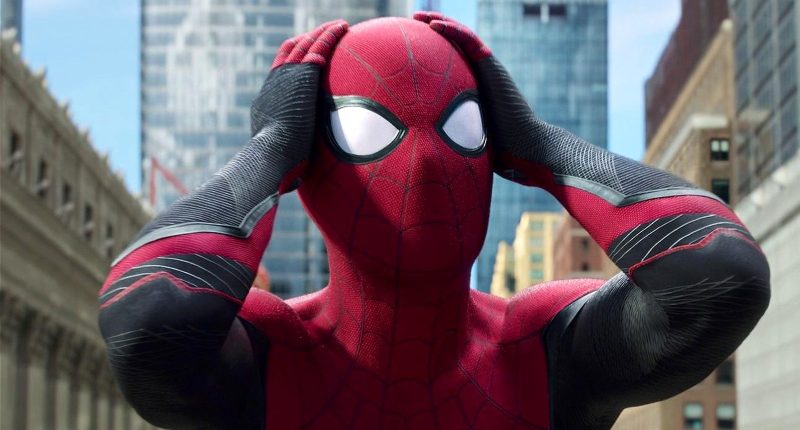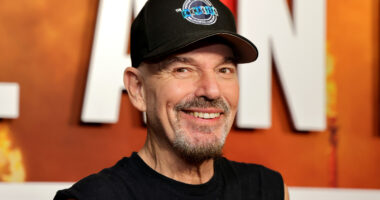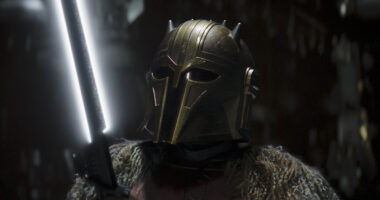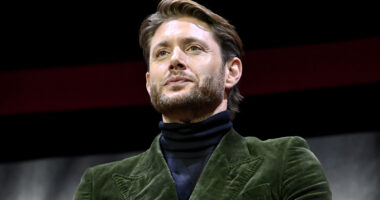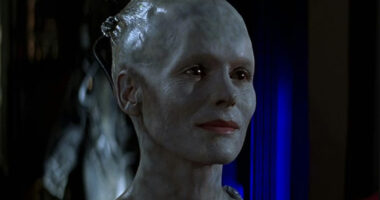Share this @internewscast.com
When considering every film in the MCU, particularly when ranking them from the least to the most impressive, the franchise’s creative highs and lows are evident. Despite the artistic peaks and valleys throughout this saga, the term “weird” is one you might not often associate with it. With the exception of the R-rated antics in “Deadpool & Wolverine,” MCU movies are generally PG-13, designed to captivate viewers of all ages. Being major productions endorsed by Disney, these films rarely venture into the realm of the outright bizarre. However, this doesn’t mean the behind-the-scenes stories of these productions lack unusual elements. In fact, the MCU is filled with peculiar facts and interesting details.
These oddities don’t all manifest in the same form. Some are simply unexpected trivia facts, such as which character surprisingly appears in every “Captain America” movie. Other strange details involve more significant topics like baffling business and creative decisions surrounding some of the biggest movies in the world. Additional examples include box office patterns or insights into which composers have most frequently partnered with the MCU.
If you watch some of the franchise’s less memorable films like “Captain America: Brave New World,” you might assume that Marvel Studios operates as predictably as plain bread. However, a deeper exploration into the MCU’s history reveals curious facts lurking in its less obvious facets.
The only character to return in every Captain America movie, isn’t Captain America
The first three “Captain America” movies, and really the entire first three MCU phases, were heavily reliant on Steve Rogers (Chris Evans). Once looked at as a character who could be “too corny” to work with modern audiences, Captain America instead became the indispensable heart of the MCU and informed some of this franchise’s most iconic moments.
This mantle of Captain America has become so important that it’s been passed on to Sam Wilson (Anthony Mackie), who headlined 2025’s “Captain America: Brave New World.” However, believe it or not, neither iteration of the titular superhero appears in all four solo “Captain America” movies. Instead, the only character involved in every single standalone “Captain America” title is Bucky Barnes, aka the Winter Soldier (Sebastian Stan).
Introduced as a side character in “Captain America: The First Avenger,” Barnes has become a beloved MCU staple, headlining movies like “Thunderbolts*” 14 years after his debut. He’s so beloved now that the second “Thunderbolts*” poster promised viewers “more Bucky!” The character’s endurance has ensured that he’s stuck around for 70 years, like Steve Rogers, and his role in a “Brave New World” was an important cameo appearance where he gave a pep talk to Wilson. Thanks to Barnes’ refusal to go down (not to mention Stan’s nine-film contract with Marvel Studios), he’s become an even more persistent part of the solo “Captain America” movies than the saga’s official lead.
Michael Bay’s Transformers movies really influenced the MCU’s Phase One
One reason Phase One projects like “Iron Man” and “The Avengers” stood out so much from the superhero pack was that they got way better overall critical responses than other 2000s/early 2010s movies like “Ghost Rider” or “Jonah Hex.” Given this distinctive facet of the MCU’s opening chapters, it’s surreal to learn that the inaugural Michael Bay “Transformers” films guided Marvel boss Kevin Feige’s initial vision for the franchise.
In 2009, Feige excitedly pointed to “Transformers: Revenge of the Fallen” as a template for the kind of audience-satisfying blockbuster he wanted “The Avengers” to be, in spite of “Fallen’s” abysmal critical reception. One of the worst-reviewed blockbusters in history, it still provided a touchstone for Feige’s own plans — and it wouldn’t be the last time the Marvel Studios figurehead referenced the “Transformers” saga.
Two years later, Feige relayed that the immense spectacle of “Transformers: Dark of the Moon” was the gold standard of tremendous scale that “The Avengers” needed to live up to. Seeing giant robots decimate Chicago put even more pressure on Feige to make sure “Avengers” didn’t come off as too small. It’s bizarre to imagine such derided blockbusters inspiring a franchise that would eventually deliver critical hits like “Black Panther” and “Thor: Ragnarok.” However, in hindsight, these comments reflect Feige’s passion for making MCU movies look and feel like no other superhero films before them. In the end, 2007’s “Fantastic Four: Rise of the Silver Surfer” wasn’t the blueprint for Marvel Studios projects; those lucrative (albeit critically lambasted) and gigantic “Transformers” movies were.
Why the Marvel One-Shots died on the vine
Starting with “Thor’s” physical media debut in September 2011, Marvel Studios began giving fans an extra bonus whenever they bought one of the MCU’s titles on Blu-Ray or DVD. These discs now came with a Marvel One-Shot short film, original projects that began with a very restrained scope featuring Clark Gregg and one or two other actors in small diner or convenience store sets. The last three One-Shots, though, gradually grew in scope and even eventually starred Hayley Atwell and Ben Kingsley, reprising their famous MCU roles. Despite the limitless potential in these shorts, they were a short-lived part of the MCU. “Captain America: The Winter Soldier’s” Blu-Ray release didn’t have a one-shot, and, save for the “Team Thor” shorts that tied into “Thor: Ragnarok,” Marvel Studios left the short film space behind.
Feige explained in 2015 that these outings ceased production because Marvel Studios didn’t have the resources or energy to create new ones while adhering to a then-fresh mandate of three films a year. The MCU’s subsequent pop culture forays rendered this reasoning nonsensical. After all, in the 2020s, Marvel Studios greatly expanded its resources to accommodate a flood of Disney+ exclusive TV shows, animated programs, and small-screen specials. Given this outcome, why couldn’t these comparatively cheaper projects get similar accommodations? Sadly, the One-Shots vanished without a trace over a decade ago. Worst of all, their demise happened due to circumstances that simply don’t make much sense.
The Marvel Studios logo didn’t always have its famous theme music
Today, composer Michael Giacchino’s Marvel Studios fanfare is incredibly iconic. There’s an immediate pulsating energy and grandeur to the track (which premiered in front of “Doctor Strange” in November 2016) thanks to its heavy use of trumpets, imposing drums, and crashing cymbals. However, it wasn’t the first major attempt at creating a fanfare to accompany Marvel Studios’ animated logo.
Three years earlier, in November 2013, “Thor: The Dark World” premiered Marvel Studios first theme music, composed by Brian Tyler, a go-to composer for Phase Two titles. This track is noticeably different than Giacchino’s tune, particularly in its lower pitch. There’s a greater rumble to Tyler’s creation, imbuing the fanfare with a more serious atmosphere. The track even ends in a slightly ominous fashion with a few lingering notes that suggest something momentous is lurking around the corner.
Giacchino’s theme music, meanwhile, sounds triumphant, almost like something from a pep rally. Whether Marvel Studios wanted a new composition that captures an upbeat aesthetic to better reflect the label’s box office hot streak or the company simply wanted a fresh fanfare from a composer still regularly working with the MCU is uncertain. What is clear is that Tyler’s theme was jettisoned just three years after it launched. In hindsight, his Marvel Studios fanfare was like a bizarrely public test run for Giacchino’s now-famous theme music.
Only the Black Panther MCU movies have won an Oscar
Both “Black Panther” movies — particularly the first — had historic Oscar experiences, including which statues they won. One of the latter film’s groundbreaking feats at the 2019 Academy Awards ceremony was becoming the first Oscar-winning MCU film, taking home three statues. “Black Panther: Wakanda Forever,” released in 2022, scored one victory, in the best costume design category. All told, the Marvel Cinematic Universe has received 23 additional Oscar nominations over the years, including 13 non-“Black Panther” nominations for best visual effects. However, none of those 23 nods have resulted in Oscar wins for any non-“Black Panther” titles.
Over nearly two decades of filmmaking, the MCU has been almost completely shut out at the Academy Awards, though that’s not a situation exclusive to this comic book movie saga. Blockbuster cinema in general has a hard time securing Oscar glory. After “A New Hope,” for instance, the ten subsequent live-action “Star Wars” movies picked up a combined 27 Academy Award nominations over nearly 30 years. Excluding honorary Oscar victories, only one of those nods resulted in an actual win — best sound for “The Empire Strikes Back.”
If “Star Wars” couldn’t secure a slew of post-1977 Oscar trophies, then it’s unsurprising the MCU wasn’t able to shatter Academy Award norms for blockbusters, either. Still, it’s certainly befuddling that non-“Black Panther” features in this ubiquitous franchise have never won a single Academy Award. Even DC’s “Suicide Squad” took home an Oscar for best makeup, after all.
The rarity of non-Avengers MCU movies topping the yearly worldwide box office
With a few exceptions, Marvel Cinematic Universe films are synonymous with massive box office numbers. Given that “Avengers: Endgame” was briefly the highest-grossing film ever worldwide, and looking at the spectacular lifetime hauls of titles like “Spider-Man: No Way Home” and “Black Panther,” it’s easy to see why Marvel Studios titles are generally considered surefire moneymakers.
However, one peculiar thing about the MCU’s box office track record is how rarely the saga’s entries have been the biggest movies of the year. Only two non-“Avengers” MCU movies, “Captain America: Civil War” and “Spider-Man: No Way Home,” have topped the yearly worldwide box office charts. Even $900+ million hits like “Iron Man 3,” “Deadpool & Wolverine,” and “Multiverse of Madness” didn’t lead their respective release years. This trend dates back to 2008, when “Iron Man” brought in only a bit more than half of “The Dark Knight’s” take at the global box office.
The MCU’s biggest titles often come in second or third at the yearly worldwide box office. “Frozen” outgrossed “Iron Man 3,” for instance, while “Transformers: Age of Extinction” surpassed “Guardians of the Galaxy” in 2014. Given the gargantuan hauls of individual titles like “Thor: Ragnarok” and “Captain Marvel,” nobody at Marvel Studios should be complaining about this recurring occurrence. However, it’s certainly a quirky phenomenon how rarely MCU titles can lay claim to being the biggest movies of the year.
The whole Phases terminology came about for bizarre reasons
Ever wonder why the Marvel Cinematic Universe has divided its timeline up into Phases? The “origin story” behind that phenomenon is a bit on the curious side. Reflecting on the franchise’s lead-up as “Avengers: Endgame” was hitting theaters, Kevin Feige recalled how, in the MCU’s earliest days, he was concerned that people would give these productions names like “the ‘Iron Man trilogy” or similar monikers. That kind of terminology made sense for the Sam Raimi “Spider-Man” films, but Feige yearned for some verbiage that immediately told moviegoers that these comic book movie realms were connected. The worlds of Tony Stark/Iron Man and his Avengers pals went far beyond the movies they headlined. That’s when the concept of dividing MCU mythology into “Phases” came into play. Phase One, for instance, would encompass the early “Iron Man,” “Captain America,” and “Avengers” movies, among others.
The underlying intent of the Phases nomenclature didn’t quite catch on as intended. Referring to portions of the MCU as “Phase Two” or “Phase Three” has largely been used as a way to succinctly describe eras of the franchise’s history rather than as a substitute for delineating specific groupings of superhero films. After all, people reference “the Guardians of the Galaxy trilogy” or “the first Captain America trilogy” all the time. Still, the mindset of reinforcing the MCU’s shared continuity and differentiating this franchise from how people talked about other superhero sagas is why terms like “Phase Five” endure, even if the widely accepted meaning differs from Feige’s original intent.
Iron Man 3’s villain was originally a woman
One of the most frustrating elements of the MCU is its subpar treatment of women characters. Initially manifesting through relegating ladies to buttoned-up love interest roles, the issue persists to this day through Phase Four and Five shortcomings, like the tendency to kill off women superheroes and villains. A microcosm of this phenomenon is found in one of the most perplexing details in MCU lore: the main antagonist in “Iron Man 3” was supposed to be a woman.
Rebecca Hall’s Maya Hansen was envisioned as the movie’s real mastermind from the script’s earliest days. However, director Shane Black recalls that Marvel Entertainment higher-ups (who were separate from Marvel Studios executives) were adamant that Hansen not inhabit this role. In these executives’ minds, a female antagonist would result in significantly smaller merchandising sales.
Black was frustrated by this turn of events but had no say in the decision and, in the end, Guy Pearce’s Aldrich Killian instead became “Iron Man 3’s” main foe. Meanwhile, Hansen stuck around in a tragic henchwoman part that culminated in her death. With her initial function now obliterated, there wasn’t much for Hansen to do, which made it weird to see an actor of Hall’s stature in the role. Naturally, Hall would later express frustration over how the role devolved during production on “Iron Man 3.” If only this were the sole time in the MCU’s existence that women drew the short straw when it came to getting exciting and fun on-screen roles.
Captain Marvel almost debuted in Avengers: Age of Ultron
After a post-credits tease in “Avengers: Infinity War,” Carol Danvers (Brie Larson) made her first proper MCU appearance when her solo movie premiered in 2019. Long before “Captain Marvel” became a box office bonanza, though, the hero nearly debuted in a very different MCU title.
Writer/director Joss Whedon tried desperately to include Captain Marvel (plus Spider-Man!) at the very end of “Avengers: Age of Ultron” in a brief scene showing off the new members that Captain America and Black Widow would lead in the next sequel. Whedon’s passion for this cameo even went so far as to prepare pre-vis effects work on a “heroic” shot of the character zooming onto Avengers campus. Ultimately, however, the crime fighter ended up MIA in “Age of Ultron,” with Wanda Maximoff and Vision instead being the notable new Avengers recruits at the end of this film.
Removing that scene capped off a long journey of Whedon trying to find a role for Captain Marvel somewhere in his “Avengers” sequel. Kevin Feige revealed in 2015 that a key reason for removing her from “Age of Ultron” was because everyone at Marvel Studios wanted audiences to know Captain Marvel as a character before she started flying around with the Avengers. Audiences would ultimately wait an additional four years to finally see Carol Danvers in live-action, a move that turned out to be a better launchpad for the character than this strange cameo would have been.
One composer has scored more MCU movies than anyone else
If anything in the MCU qualifies as “weird,” it’s the franchise’s strange relationship with film composers. Other major movie franchises like “Star Wars” or “The Lord of the Rings” cling tightly to composers like John Williams and Howard Shore, respectively. These musicians are responsible for the sonic landscape of every corner of those films. The MCU, meanwhile, is constantly swapping out composers. Each of the solo “Iron Man” and “Thor” movies, for example, had different people in charge of their music. This means there are countless one-off musicians across the MCU’s projects, including John Debney, Joel P West, and Mark Mothersbaugh, among others. That makes it notable whenever the superhero saga brings composers like Alan Silvestri and Ludwig Göransson for more than one feature.
It also makes Michael Giacchino’s musical contributions to the MCU even more remarkable since he’s scored far more Marvel Studios titles than anyone else. It’s staggering and downright curious that, in addition to scoring the current MCU logo theme, Giacchino has scored six separate movies (counting “The Fantastic Four: First Steps”) for the studio. His Marvel legacy also includes directing and scoring the Marvel Studios Television Special “Werewolf By Night.” Giacchino’s delivered plenty of memorable tracks during his extensive MCU experience, particularly in his creative melding of various sonic eras of “Spider-Man” cinema in “Spider-Man: No Way Home.” He’s a peculiar (and talented) outlier, bucking the one-and-done composer mode Marvel Studios usually operates in.
The Eternals almost debuted in an ABC TV show
Jack Kirby debuted the Eternals in 1976’s “The Eternals” #1. But despite being created by one of the Marvel Universe’s primary architects, save for one 2014 motion comic, the unusual family of superpowered beings never appeared in any form of non-comics media until 2021. That’s when the massively expensive and critically divisive “Eternals” movie from director Chloe Zhao bowed in theaters.
What many Marvel fans may not know is that these characters nearly made their MCU debut in the 2010s via the small screen. John Ridley’s long-gestating ABC Marvel show, announced all the way back in April 2015, right when “Agents of S.H.I.E.L.D.” was wrapping up its second season, was revealed in early 2024 to have been an aborted Eternals adaptation. Ridley himself confirmed this and broke down the brutal, bold elements that his show would’ve included, such as the pilot’s opening sequence depicting a teenage boy appearing to attempt suicide by way of a power drill to the ear.
Rather than being upset about the show not happening, Ridley expressed gratitude that ABC’s “Eternals” never went forward since he felt the project needed a crowd-pleaser’s touch, saying that material that resonates with him skews more outlandish and obtuse. It’s staggering to think about “Eternals” airing on the same network as “The Middle,” though that boondoggle of an “Inhumans” TV show suggests heightened cosmic Marvel characters weren’t meant to be adapted as cost-restricted ABC programming. Still, the unrealized Ridley show at least demonstrates that Marvel had immense interest in the Eternals long before 2021’s failed blockbuster.
